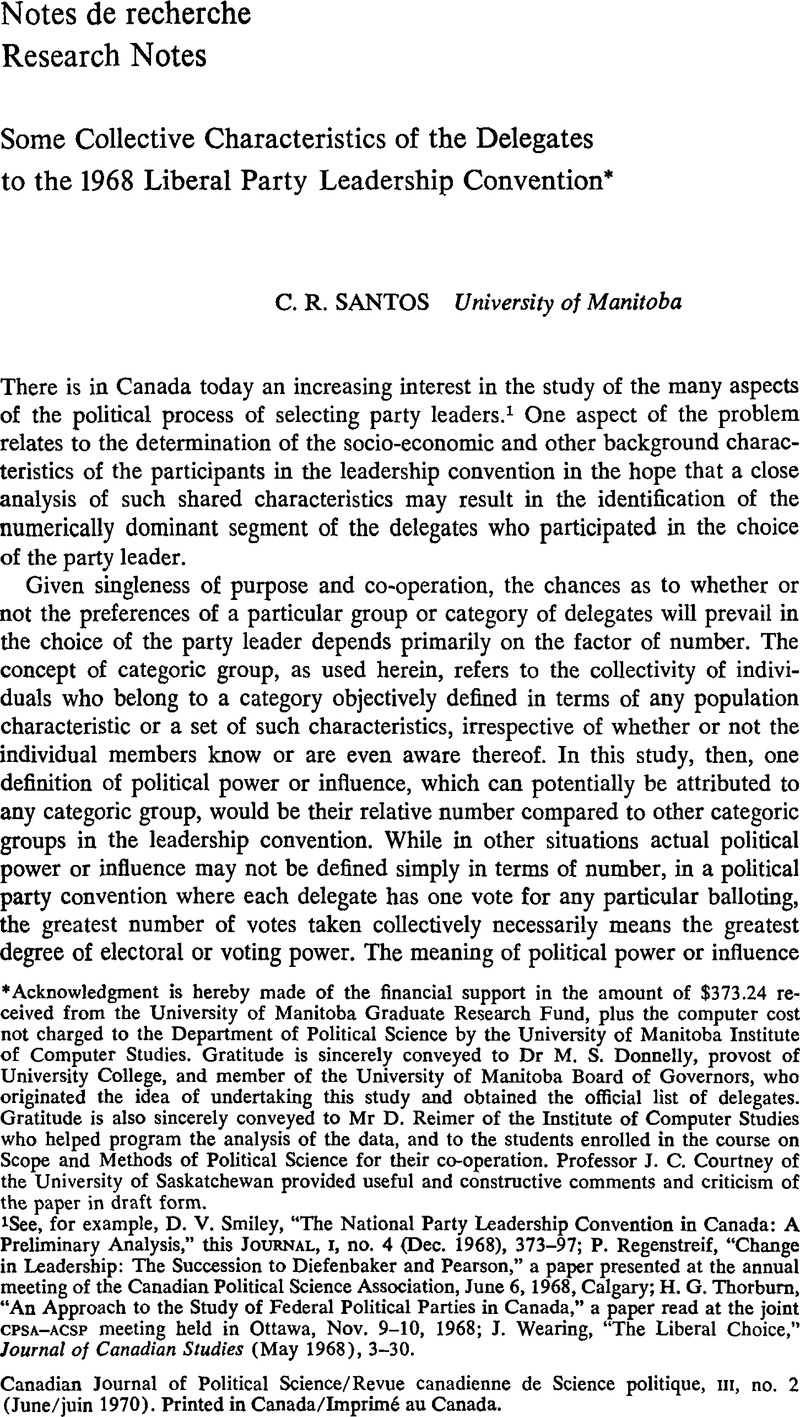Published online by Cambridge University Press: 10 November 2009

1 See, for example, Smiley, D. V., “The National Party Leadership Convention in Canada: A Preliminary Analysis,” this Journal, I, no. 4 (Dec. 1968), 373–97Google Scholar; Regenstreif, P., “Change in Leadership: The Succession to Diefenbaker and Pearson,” a paper presented at the annual meeting of the Canadian Political Science Association, June 6, 1968, CalgaryGoogle Scholar; Thorburn, H. G., “An Approach to the Study of Federal Political Parties in Canada,” a paper read at the joint cpsa-acsp meeting held in Ottawa, Nov. 9–10, 1968Google Scholar; Wearing, J., “The Liberal Choice,” Journal of Canadian Studies (May 1968), 3–30.Google Scholar
2 We genuinely appreciate the co-operation of the Liberal convention delegates for taking time to answer our questionnaire. They shall, of course, remain anonymous in order to preserve the confidentiality which we promised to them.
3 Although some authors apply the term “variables” to quantitative data only and the term “attributes” to qualitative data, we are using the two terms synonymously, inasmuch as qualitative data may be categorized and the categories counted as if they were quantitative data.
4 Dominion Bureau of Statistics (dbs), 1966 Census of Canada, Sex Ratio, Population, Catalogue no. 92–609, vol. I (1–9), Dec. 1967, Introduction.
5 Ibid.
6 Department of National Revenue, Taxation Statistics, particularly Table 33 entitled “Tax-payers and Federal Tax Payable by Income Class, Taxation Year, 1966,” reproduced in The National Finances, 1968–9, Toronto, 47.
7 Ibid.
8 dbs, 1961 Census of Canada, Ethnic Groups, Population, Catalogue no. 92–545, vol. I, part 2, Bulletin 1.2–5, Introduction.
9 dbs, 1966 Census of Canada, Rural and Urban Distribution, Population, Catalogue no. 92–608, vol. I (1–8), March 1968, Introduction.